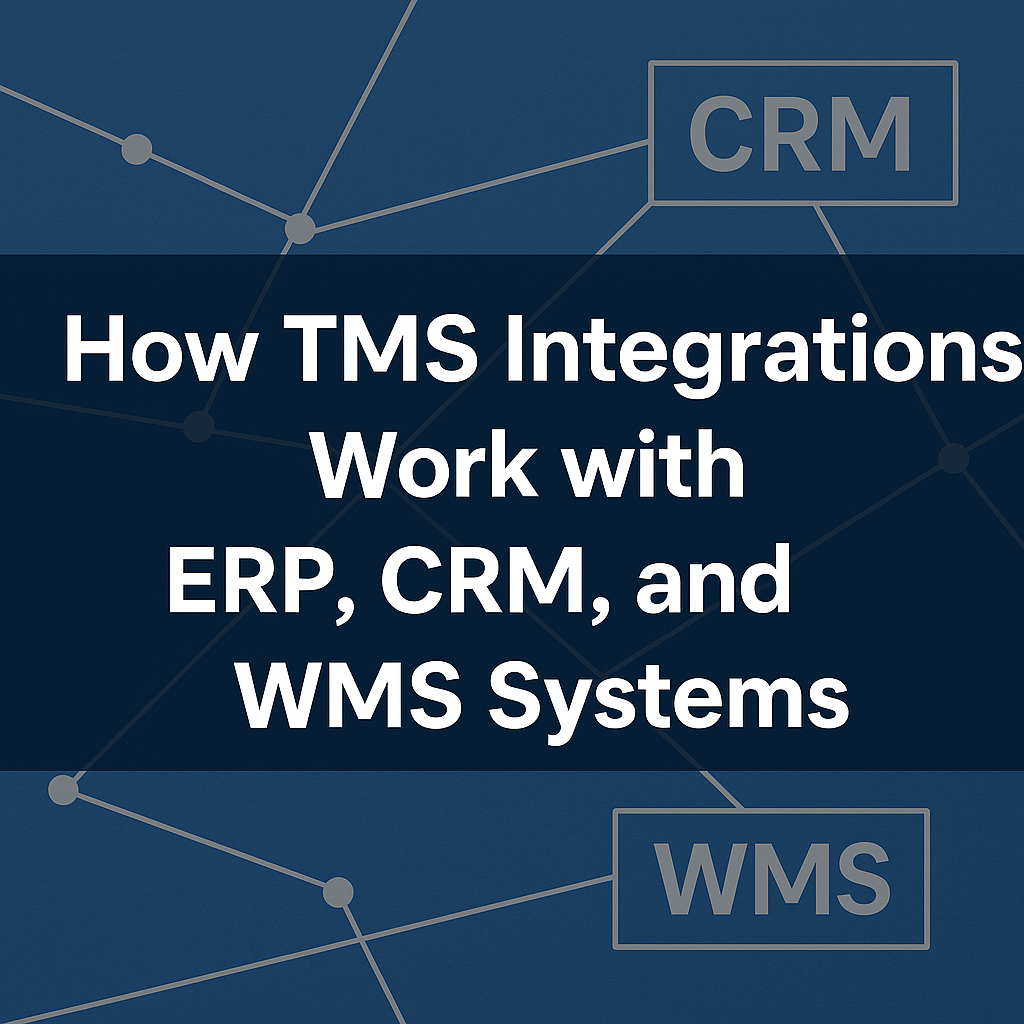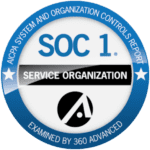Table of Contents
In the intricate dance of supply chain management, where precision and agility are paramount, TMS integration is the unsung hero. As businesses strive to outpace competitors in a rapidly evolving market, the role of a Transportation Management System (TMS) comes into sharp focus. These systems are the backbone that synchronize the complex choreography of logistics operations, particularly when deftly integrated with ERP, CRM, and WMS systems. I promise, even if acronyms aren’t your usual party conversation, this amalgamation is a game-changer for operational efficiency.
To fully appreciate the nuances of TMS integrations, one must first understand the individual players. While ERP weaves together every facet of enterprise operations, CRM nurtures customer relationships, and WMS orchestrates warehouse workflows. Together, when intertwined through TMS, these systems transcend singular functionality, driving significant advances in supply chain management. It’s rather like assembling a dream team—but one that actually delivers, unlike my fantasy football picks last season.
In this article, we’ll delve into the inner workings of TMS integration with ERP, CRM, and WMS, elucidating its impact on business operations. We’ll explore the benefits, challenges, and future trends that shape this dynamic field. From improved real-time visibility to fortified data synchronization, understanding these integrations is crucial for decision-makers looking to propel their organizations into a more efficient future. For a deeper dive into transportation management solutions, consider this comprehensive guide.
H1 How TMS Integrations Work with ERP, CRM, and WMS Systems
Integrating a Transportation Management System (TMS) with Enterprise Resource Planning (ERP), Customer Relationship Management (CRM), and Warehouse Management Systems (WMS) offers a streamlined operational approach. By combining these technological powerhouses, businesses can achieve enhanced efficiency and visibility within the supply chain. TMS integration is pivotal in offering real-time data synchronization across these platforms, which reduces errors and improves decision-making.
How TMS Integrations Work
ERP Integration: By aligning TMS with ERP systems, such as those offered by Hatfield & Associates, organizations gain comprehensive oversight of transportation costs and financial metrics.
CRM Integration: Integrating TMS with CRM systems enhances customer service by providing real-time shipment updates, improving communication, and bolstering customer satisfaction.
WMS Integration: When paired with WMS, TMS ensures efficient route optimization and inventory management, reducing the time products spend in transit.
Here’s a simplified view:
System | Key Benefit |
|---|---|
ERP | Financial insight and cost control |
CRM | Improved customer communication |
WMS | Enhanced route and inventory optimization |
While TMS integration is sophisticated, it’s worth remembering even the best-laid plans require tweaks. During an ambitious integration project, I’ve found unexpected challenges are, in fact, opportunities for innovation—a sentiment echoed by many in this field.
Introduction to TMS Integrations
In today’s dynamic business environment, TMS integration has emerged as a strategic asset for companies aiming to optimize their operations. The seamless interplay between Transportation Management Systems and other core systems like ERP, CRM, and WMS significantly enhances operational efficiency and provides crucial real-time insights across the supply chain. Implementing TMS integration can be a transformative step, allowing businesses not only to streamline operations but also gain a robust competitive edge.
Definition and Purpose of TMS
A Transportation Management System (TMS) is a logistics platform designed to optimize the shipment planning and execution processes. Predominantly used within the supply chain and logistics sectors, TMS supports businesses in managing transport operations more efficiently. Its core purpose is to ensure shipments are handled cost-effectively and on time. By leveraging a TMS, businesses gain detailed insights into transportation data, aid in regulatory compliance, and enhance service delivery. In essence, a TMS serves as the backbone for streamlined shipping processes, boosting both accuracy and efficiency.
Overview of ERP, CRM, and WMS
Enterprise Resource Planning (ERP) systems are central to managing core business processes. They provide an integrated view of business functions, aiding in financial management and resource allocation. When combined with a TMS, ERPs offer a macro view of transportation spending and financial performance.
Customer Relationship Management (CRM) stands at the crossroads of customer interaction and satisfaction. By integrating CRM with TMS, businesses can deliver real-time updates to customers, improving transparency and trust—a necessity for maintaining healthy client relationships.
Warehouse Management Systems (WMS) focus on inventory control. They track the storage and movement of inventory, ensuring optimal stock levels are maintained. When integrated with a TMS, WMS facilitates route optimization, decreases delivery times, and streamlines the overall supply chain.
Importance of Integration in Supply Chain Management
In the realm of supply chain management, integration is not just beneficial—it is essential. Effective TMS integration leads to synchronized operations across various platforms, reducing errors and speeding up data flow. As businesses adopt integration, they can witness benefits like enhanced decision-making capabilities, which stem from data-driven insights, and improved supply chain visibility. This increased transparency aids stakeholders in making informed strategic decisions. Moreover, integration streamlines processes, reducing redundant activities and minimizing the chances of manual errors in data handling. For those interested in delving deeper into the process, our comprehensive guide on transportation management solutions offers valuable insights.
In summary, the importance of integration within supply chain management cannot be overstated. It’s like the well-oiled engine of a classic sports car—it may not be visible at first glance, but its impact is undeniably profound. Aligning disparate systems into a unified framework empowers businesses to function more effectively, meeting customer expectations and navigating market challenges with ease. Studies such as those conducted by academic institutions consistently highlight the competitive advantage offered by integrated systems, further solidifying their critical role in modern business strategies (source: MIT Center for Transportation & Logistics).
Benefits of TMS Integration
In today’s fast-paced business environment, successful logistics operations hinge on the seamless integration of systems, commonly known as TMS integration. Not only does this integration facilitate improved operational efficiencies, but it also empowers decision-makers with enhanced capabilities to nimbly adapt to market demands and consumer expectations. The strategic advantages offered by a comprehensive TMS platform, like those from Hatfield & Associates, cannot be understated. Through effective TMS integration, businesses can leverage real-time data processing, streamline logistical processes, synchronize disparate systems, and ultimately, drive cost efficiencies across the board.
Improved Real-Time Visibility
Real-time visibility is no longer a luxury—it’s a necessity in the logistics world. Through TMS integration, businesses gain unprecedented insights into their supply chain operations. Ever wondered where your shipment was while tracking showed radio silence? With enhanced visibility, such worries become relics of the past. Decision-makers receive instant access to data analytics and tracking systems, better equipping them to predict and respond to delays and disruptions. According to a study published by the Journal of Business Logistics, supply chain visibility is closely linked to higher service performance, which translates to satisfied customers and increased revenue.
Streamlined Operations
Streamlining operations is an ongoing objective for any business striving to maintain a competitive edge. TMS integration provides a holistic solution that breaks down communication silos and optimizes the entire supply chain. By integrating transportation management solutions, businesses can automate routine tasks and reduce the likelihood of human error. I can recall from personal experience, when adopting a TMS, our team initially feared losing that personal touch in logistics. However, it became clear that the newfound automation allowed us to focus more on strategic decision-making, rather than mundane daily operations.
Enhanced Data Synchronization
In an era where data is king, the need for enhanced data synchronization is paramount. TMS integration ensures that disparate systems work in unison, generating a single source of truth across the organization. This synchronization fosters seamless data flow between inventory management, route optimization, and supply chain management systems. As someone who had once juggled multiple spreadsheets with data entry errors as pervasive as a cold virus spreading through an office during flu season, I can attest to the relief that comes with clean and precise data synchronization. Organizations leveraging a thoroughly integrated TMS like those offered by Hatfield & Associates, eliminate inconsistencies, thereby making data-driven decisions more accurate and effective.
Cost Reduction and Efficiency
Last but certainly not least, TMS integration has a transformative impact on cost reduction and operational efficiency. By optimizing logistics processes and improving supply chain visibility, businesses are able to cut unnecessary expenses. For instance, integrating a TMS can lead to notable reductions in routing inefficiencies and fuel consumption. This cutting-edge integration empowers decision-makers to pinpoint cost-saving opportunities that might have otherwise gone unnoticed. Moreover, according to a report by the Massachusetts Institute of Technology, companies implementing advanced transportation management systems reported a decrease in logistics-related costs by over 10%. This level of efficiency not only boosts the bottom line but also contributes to a leaner, more sustainable business model.
For an in-depth exploration of transportation management systems and their impact on business operations, visit Hatfield & Associates’ transportation management solutions. Such resources provide comprehensive insight into the strategic advantages that TMS integration can offer.
Methods of TMS Integration
In the rapidly evolving landscape of transportation management, the demand for seamless TMS integration has never been more critical. The intricacies of modern supply chains necessitate robust connections between TMS systems and a myriad of other platforms, such as logistics providers and Customer Relationship Management (CRM) software. Opting for the right TMS integration method can significantly impact a company’s operational efficiency, scalability, and competitiveness. Whether your choice is API-based integration, Electronic Data Interchange (EDI), or another method, understanding the nuances is vital.
As a decision-maker, it’s akin to having the perfect pair of shoes for every occasion. A mismatched integration could lead to stumbling over logistics processes, while seamless integration ensures business operations run like a well-oiled machine.
API-based Integration
APIs have emerged as a modern linchpin in achieving efficient TMS integration. Designed to facilitate communication between different software systems, they offer unparalleled flexibility and real-time data exchange—qualities essential for comprehensive supply chain management. API-based integration simplifies the communication between your TMS and related software, supporting swift data transfers that keep you updated with the latest information.
The interchange of data happens almost instantaneously, making it ideal for businesses that rely heavily on agility and responsiveness. For example, in my previous role at a tech startup, integrating our TMS through API was like discovering the cheat codes in a video game—reducing response times and streamlining operations significantly. Although, I must admit, the occasional lack of documentation did feel a bit like tackling advanced mathematics without a calculator. Despite this, the flexibility and customizability of API integration keep it at the forefront of modern digital strategies.
Electronic Data Interchange (EDI)
Electronic Data Interchange (EDI) represents an older but reliable method for TMS integration. While newer technologies have surfaced, EDI is akin to a classic automobile—timeless and ever-reliable. It standardizes the structured data format, enabling basic, albeit robust, communication between disparate systems. It is often used by larger organizations with entrenched systems where modernization is akin to coaxing an old pet into learning new tricks.
Despite being less sexy than its API counterpart, EDI is battle-tested and compliant with many industry-specific regulations. Indeed, back in my first job handling logistics, adopting EDI felt akin to reuniting with an old, trusty typewriter—sturdy, reliable, with the occasional nostalgic clickety-clack. Conventional wisdom sometimes suggests EDI lacks the dynamic sparkle of APIs; however, it does offer a highly reliable data transfer mechanism, especially beneficial in industries where standardization is non-negotiable.
Pros and Cons of Different Integration Methods
Choosing the right TMS integration method requires a careful evaluation of the pros and cons inherent to each approach. On the one hand, API-based integration offers immense flexibility and supports real-time updates. This is perfect for organizations requiring immediate data accessibility and minimal latency—a requirement for effective supply chain visibility platforms. However, the learning curve can be steep and, occasionally, documentation might be as elusive as understanding why socks invariably get lost in the laundry.
On the other hand, EDI remains favoured for its stability and adherence to industry standards. Its structured nature sidesteps potential miscommunication, facilitating data interchange even across older systems. The downside? The pace of data exchange is not instantaneous, and setting it up often requires more upfront investment in time and resources. But in sectors where regulation and compliance are critical, EDI integration is akin to having a fortress.
Ultimately, the choice between API and EDI should align with your organization’s strategic goals, existing infrastructure, and the demands of your supply chain network. Each method offers unique benefits and challenges, underscoring the importance of selecting one that harmonizes with your company’s overarching vision. For those seeking further guidance on advanced integration; I recommend consulting Hatfield & Associates’ comprehensive resource on transportation management solutions.
For those interested in delving further into the importance of system integrations in transport logistics, a comprehensive study by the International Journal of Logistics Management provides valuable insights (source).
Challenges in TMS Integration
Implementing TMS integration is a formidable task for many companies, akin to putting a puzzle together without referencing an image on the box. As technology advances, businesses seek efficient methods for managing their logistics operations via Transportation Management Systems (TMS). However, the path to seamless integration is often fraught with challenges. From grappling with data security issues to ensuring system compatibility, each hurdle requires careful consideration and expert navigation. Acknowledging these difficulties at the outset can better equip business decision-makers to pursue successful integration while minimizing disruptions.
Data Sensitivity and Security Concerns
Data sensitivity and security are inevitably at the forefront of any TMS integration discussion. After all, no company relishes the thought of sensitive logistics data being compromised, much like how one wouldn’t appreciate finding a fly in their soup. As companies increasingly rely on digital systems to manage operations, the importance of protecting confidential cargo information becomes critical. Implementing robust cybersecurity measures is essential to fortify data against potential breaches. There’s also the issue of regulatory compliance, which demands that all data handling aligns with legal standards—similar to ensuring all passengers’ seatbelts are fastened before the bus departs.
Compatibility and Interoperability Issues
Another persistent challenge is achieving compatibility and interoperability among various systems—a situation comparable to a symphony where each instrument must perfectly harmonize with the rest. Unfortunately, businesses often operate multiple disparate systems that struggle to communicate effectively with each other. Overcoming this requires a meticulous examination of existing systems and strategic planning to facilitate smooth integration. When considering the selection of a TMS provider, like Hatfield & Associates, businesses must prioritize systems renowned for their seamless compatibility. Learning from personal experience, I once managed a TMS project where older legacy systems wouldn’t play nicely with new software, requiring creative solutions to bridge these technological gaps. Such instances underscore the importance of selecting adaptable and flexible transportation management solutions.
Need for Ongoing Support and Updates
Finally, once the TMS is integrated, the journey doesn’t simply end there. Much like a garden requires tending after the initial planting, TMS systems need continuous support and updates. Commitment to regular maintenance ensures the system runs smoothly and adapts to industry changes, such as regulatory updates or novel logistics challenges. Equally important is ensuring staff stays trained and updated, akin to having a seasoned captain at the helm navigating through the logistics waters. Regular updates help optimize system performance, mitigate any emerging glitches, and sharpen competitive edges. Embracing this necessity for continuous improvement will ensure maximum return on investment in a dynamic business environment.
For more insights into effective TMS strategies and solutions, consider exploring transportation management solutions. Additionally, studies such as those provided by the Government Accountability Office offer industrial data security insights essential for informed decision-making in the logistics realm (source: https://www.gao.gov).
Key Integration Points
For a business trembling in the complexities of logistics, envisioning an integrated Transportation Management System (TMS) can feel a bit like considering skydiving with an umbrella. However, when expertly executed, TMS integration not only transforms operational efficiencies but also enhances customer satisfaction and market competitiveness. There are essential touchpoints or integration points that every company should pay heed to when considering TMS integration. These touchpoints encompass syncing crucial data entities, coordinating the day-to-day logistics operations, and ensuring seamless data flow throughout the supply chain.
Syncing Critical Entities
Enterprises today are juggling multiple systems, from Customer Relationship Management (CRM) to inventory management software. It can sometimes feel like trying to tell cats and dogs to get along. With TMS integration, syncing these critical entities is like giving them a common language, ensuring harmony across systems. To achieve this, businesses must start by identifying the core entities requiring synchronization. These typically include orders, shipments, inventory levels, and customer details.
For instance, at Hatfield & Associates, we’ve seen clients excel by initially focusing on aligning their TMS with other legacy systems. The one point often overlooked is the change management required across different departments; everyone must be on the same page. During a project with a mid-sized logistics provider, we learned that it is crucial for the IT, operations, and sales departments to collaboratively map out data flows from the get-go.
Coordinating Day-to-Day Operations
Like an orchestra conductor, a TMS requires coordination to ensure all instruments (or systems, in this case) play in unison. Daily logistics operations are a medley of tasks, optimized routing, order handling, and resource allocation—to name a few. With a well-integrated TMS, the overlapping logistics activities become manageable and, dare I say, even predictable.
The secret? Investing time in understanding the specific operational needs before jumping into TMS implementation headfirst. Leaning on expertise, as found at Hatfield & Associates, ensures that the strategic objectives align with the daily operational goals. It’s akin to aligning the stars before expecting them to guide your navigation. Through tailored transportation management solutions, companies enhance coordination, tackle inefficiencies, and pave the way for scalability.
Ensuring Seamless Data Flow
Ensuring uninterrupted data fluidity within and between systems is the holy grail of logistics management. But as any savvy industry insider will acknowledge, it’s scarier than it sounds because data integration often resembles conducting an orchestra where only half the musicians have sheet music. A seamless data flow means that all systems participate like a symphony, mitigating data silos and enabling informed decision-making.
One of the prevalent challenges is handling data migration from disparate systems. Imagine herding cats, but with data; that’s often the reality. Here, leveraging technology and expertise, such as the solutions provided by Hatfield & Associates, delivers a significant competitive advantage. Our clients frequently note the enhanced agility that seamless integration grants, allowing them to adapt quickly to market changes and customer demands.
A scholarly source underscores this point: According to a study by MIT, integrating logistics data leads to more accurate forecasting and optimization, boosting overall operational efficiency. When data exchanges smoothly across platforms, everyone benefits—from the warehouse associate to the decision-makers.
In essence, TMS integration is not just a technical venture; it’s a strategic pivot that aligns business processes with evolving market dynamics. For further insights into transportation management solutions, I recommend exploring the extensive guide offered by Hatfield & Associates.
Impact of TMS Integration on Business Operations
In today’s fast-paced business landscape, TMS integration is more than a buzzword—it’s an essential evolution for any company looking to maintain a competitive edge. By effectively aligning your Transportation Management System (TMS) with existing business processes, you enable seamless information flow, streamline operations, and ultimately drive profitability. From firsthand experience, I can attest that the arduous days of toggling between disparate systems become a distant memory with successful TMS integration. When executed correctly, the outcome is akin to upgrading from a clunky old typewriter to a high-speed word processor—it’s not just about getting the job done, but doing so with unprecedented efficiency and precision.
Improved Service Quality
Integrating a TMS into your operations can considerably enhance the quality of service provided to clients. A TMS is designed to automate and optimize the multitude of tasks involved in logistics and transportation management, thus reducing errors and inefficiencies. I remember a time when I relied heavily on manual tracking for shipments. There were moments of sheer panic—usually at the crack of dawn—when discrepancies emerged between what was shipped and what was received. A well-integrated TMS uplifts service quality by ensuring real-time visibility, allowing for proactive resolution to potential issues. Moreover, it can facilitate seamless communication with customers, who, let’s be honest, are much happier when they receive a prompt resolution to their inquiries.
Simplified Document Creation
One of the often-overlooked benefits of TMS integration is the simplification of document creation. Transport and logistics involve an overwhelming amount of paperwork, ranging from invoices to compliance documentation. Prior to integrating a TMS, organizing this mountain of documents was a task that often consumed endless hours. With a robust TMS, however, document creation becomes swift and structured. This system automates form generation and maintains accuracy by syncing data directly from your integrated databases. Imagine eliminating five redundant steps from your document creation process—it’s like discovering a shortcut on your typical morning commute. Additionally, if you’re curious to explore more about advanced transportation management solutions, be sure to visit Hatfield & Associates’ insightful transportation management solutions.
Reduced Operational Costs
Finally, one of the most compelling advantages of TMS integration is the reduction in operational costs. By optimizing route planning and load management, a TMS can significantly cut down unnecessary expenditure, such as fuel and time. During a particularly daunting fiscal quarter, I witnessed firsthand how altering delivery routes based on real-time analytics saved the organization thousands in fuel costs. The streamlined process reduces human error, leading to fewer costly mistakes and less waste. Implementing a TMS is akin to hiring an infallible logistics manager who never tires—a manager who naduces costs by optimizing every step of your operational processes.
For those interested in the empirical backing of these benefits, a recent report by the U.S. Department of Transport (link: here, which extensively covers the economic impacts of advanced logistic technologies. It’s a deep dive into how technology is reshaping the business of transport, providing actionable intelligence for the forward-thinking executive.
Future Trends in TMS Integration
TMS integration is significantly shaping the logistics landscape, offering substantial benefits beyond mere efficiency. These systems unlock enhanced visibility and real-time data sharing throughout supply chains. Moving forward, there’s an unmistakable shift towards leveraging advanced technologies that promise to revolutionize how these systems are implemented and utilized. This brings an interesting notion to ponder: is the future of TMS integration a smooth highway or a winding road full of unexpected turns?
Emerging Technologies Influencing TMS
Emerging technologies are playing a pivotal role in reinventing transportation management systems. Machine learning algorithms, for instance, are being integrated to make sense of complex data and deliver predictive analytics. This insight enables businesses to anticipate demands and optimize operations—much like having your proverbial cake and actually eating it too.
Blockchain technology is also coming into the fold by ensuring transparency and security within TMS transactions. By providing a decentralized ledger, enterprises can streamline processes and enhance trust levels across their networks. Of course, early adopters of these impressive innovations often find themselves championing unexplored territories, learning in real time while serving as trailblazers for others. In my experience, working with an avant-garde client as they implemented blockchain reminded me of navigating an IKEA warehouse—opportunities were boundless, albeit occasionally requiring an offbeat approach.
The Internet of Things (IoT) continues to expand horizons for TMS integration. By connecting devices across the supply chain, IoT facilitates seamless communication and enhances real-time decision-making capabilities. This interconnectedness transforms logistics operations, propelling them into a future where responsiveness reigns supreme.
Trends in Supply Chain Digitalization
Supply chain digitalization and its corresponding trends are reshaping the logistics industry, with TMS integration leading the charge. Early adopters, keen to capitalize on this momentum, are already reaping the benefits. Businesses are focused on employing data-driven transportation management solutions to augment their operations and improve client experiences—a strategy that’s akin to playing a game of chess with strategic foresight.
A key aspect of successful digitalization hinges on interoperability. For TMS systems to deliver optimal value, they must communicate fluidly with existing Customer Relationship Management software and inventory management platforms. As I ventured into my first TMS integration project, achieving this seamless interface felt like coordinating a symphony—each element required precise timing and synergy to create a harmonious result. According to a study published by the Massachusetts Institute of Technology source, interoperability is critical to the success of digital transformations across industries.
Supply chain visibility also redefines TMS integration. By leveraging real-time data and responsive analytics, businesses can achieve adaptable strategies that withstand disruptions. With digital twin technology taking root, organizations can develop virtual replicas of their supply chains, allowing them to experiment and tweak processes without the risks associated with real-world alterations.
Transitioning into the future, it’s imperative for logistics providers to embrace these innovations. Doing so ensures their continued relevance and competitiveness in a swiftly evolving market. For more insights into transportation management solutions that drive forward-thinking operations, explore our comprehensive guide here.




